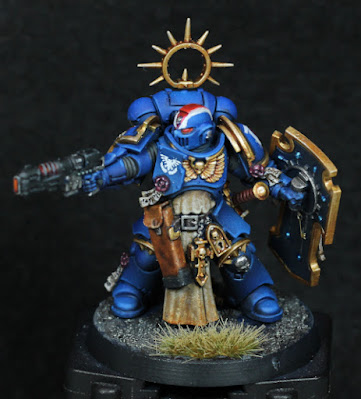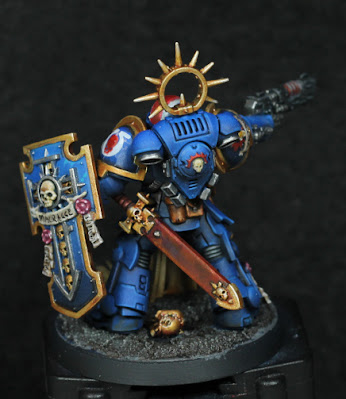 |
| Admit it, you want to make "vroom vroom" noises. |
Despite a bunch of Terminators still to get some attention, I have motivation to start on yet more models. This might put a bit of a strain on "numbers on the go", but at the very least I can get these started. The design of these jetbikes is visually incredible, and I've been wanting to have some of my own done up since I first saw them - and now is the chance.
A suitably large amount of planning has gone into assembly, colours, and even which stand height to use. These will be Blood Angels, naturally, and will likely be part of the 30k force that I have enough models for now. For this reason I'm using some of the older Forgeworld MkIV shoulder pads - the design is ever so slightly more ornate, and reflects the IXth Legion style, as opposed to the Blood Angels Chapter style. It's a small thing, but important.
There are three jetbikes in the kit, and I'm highly unlikely to be expanding that number anytime soon, so I can afford to be a little more careful with these models. While perhaps not a centrepiece, they will definitely demand attention on the tabletop, so I want them to look nice. The rough colour scheme will be red (of course) with black trim, and then gold filigree patterning on the armour panels. I'm considering a black/red split on the helmets, perhaps indicating them as a specialised unit, but that's not set in stone. More than likely I won't be going with yellow helmets, for no other reason than I consider that a 40k choice and helps to separate Legion and Chapter more.
I've magnetised the weapon options, which turned out to be a not too terrible experience. Just a matter of getting the right drill bit size, making an indent where the centre is, making a pilot hole and then drilling out just enough to fit the magnet. I didn't bother with any putty to help keep the magnets in place, but can easily adjust that if they come out later on. Aligning the magnets was also much easier than I'd originally thought too: there are convenient matching slots that can be used for this purpose. Without that I would have had to do a lot of careful measuring, marking, and slow drilling to get everything just right.
Speaking (writing) of alignment troubles, I did have to pin part of the jetbike in place. Where the rider's seat connects to the front, the attachment points aren't the best. There was just not enough surface contact to form a proper bond, so a small piece of paperclip is helping to strengthen that. To make sure this was all aligned properly, I first drilled one side and then used a smaller piece of paperclip sticking out. By putting a dot of paint on this and then connecting as close as possible to what it should be, I was able to get a matching guide point. A pilot hole and then drilling out more for the paperclip, and all just kind of worked. The hole is about a half-millimeter (or less) diameter larger than the paperclip just to give some wiggle room in matching the pieces - the glue will fill that in readily enough.
There are naturally some gaps when working with resin, and I used milliput for some of them. I tried liquid green-stuff as well, but that didn't work quite as well. The particular milliput I used was fine grain, and sanded back quite smooth. I suspect it will be my go-to for future resin gap filling. I also used milliput to add some padding underneath where the jet engine connects to the piece behind the rider. There are again poor connection points around there, but I couldn't get a good angle for pinning it. Seems to have offered good enough gap filling to keep everything securely in place.
For the joys of working in resin, this is one model I wouldn't mind seeing a plastic version of. Still, they're all assembled now, excepting some pieces left off for painting.
The bases I'm not decided on - I could leave them clear (and have covered parts in a masking glue to prevent paint getting on those areas) or paint up the base. And I still have to decide how to magnetise the base, if at all, for storage and transport. Plenty of time to decide on that, but I will glue the stand in place fully. The connection point could use the reinforcement, and I can always drill it out if I want to change anything later on.
Hopefully i can get started on airbrushing the bikes this weekend.
-- silly painter.



